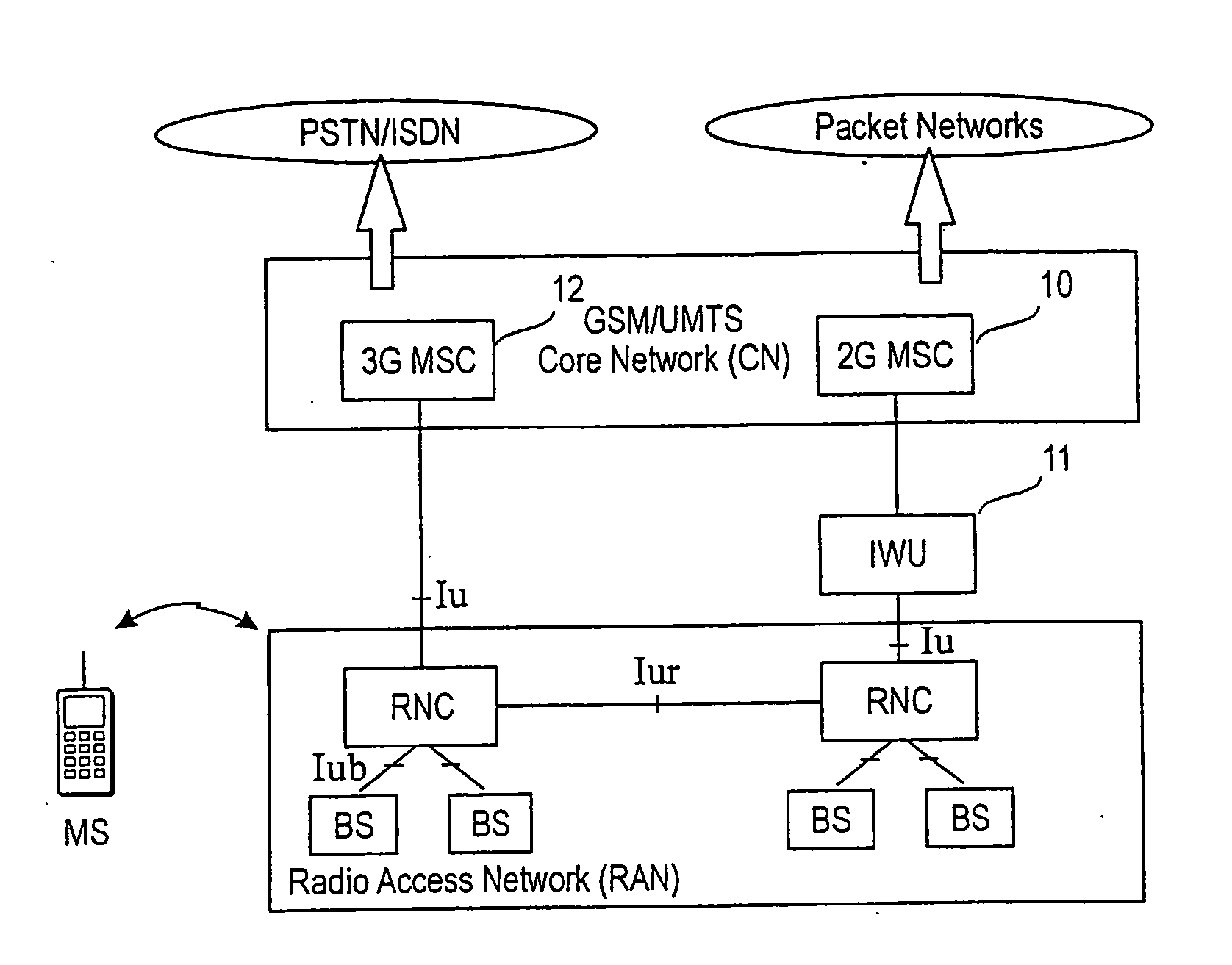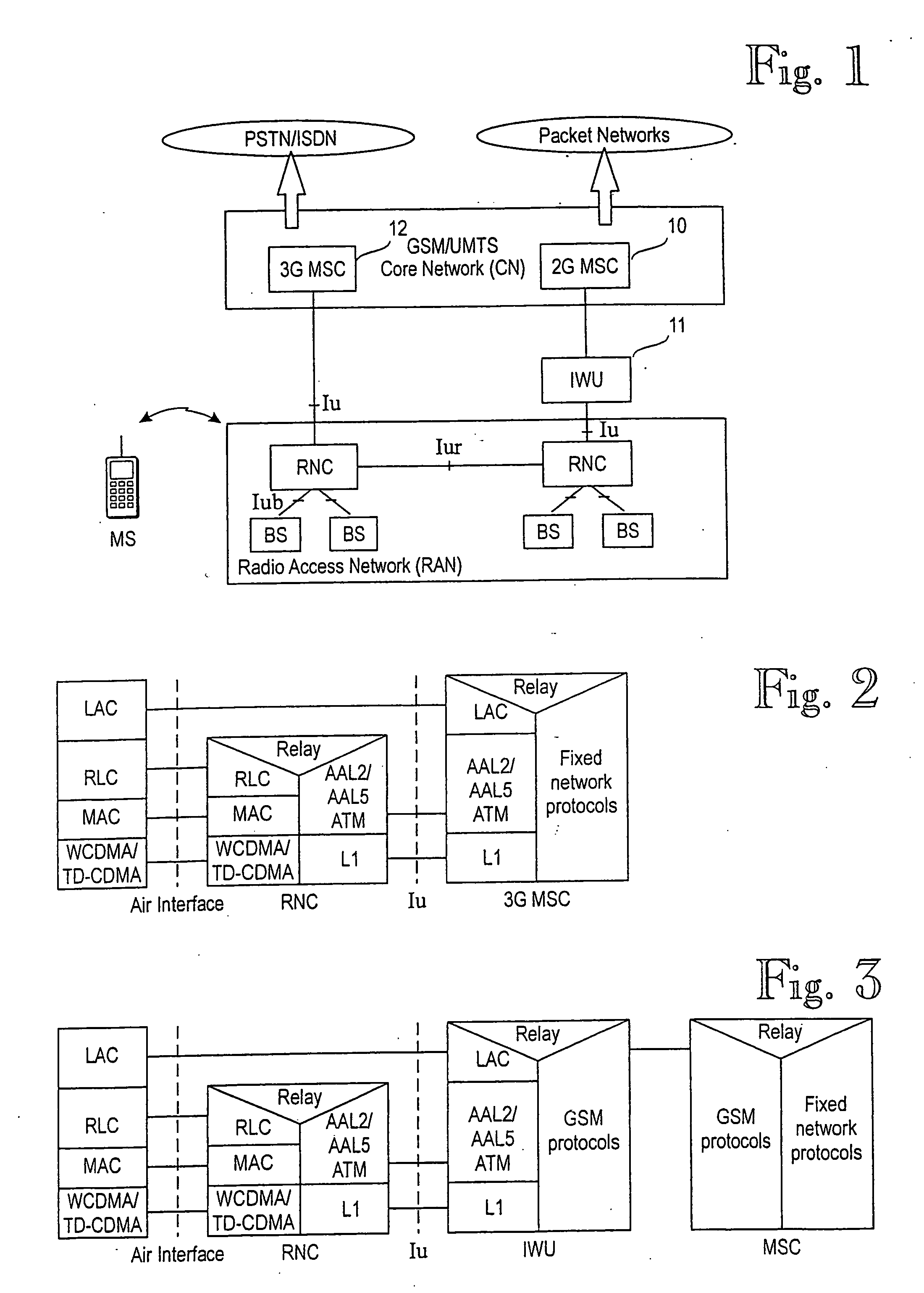Flow control method in a telecommunications system
a technology of telecommunications system and flow control method, which is applied in the direction of digital transmission, data switching network, network traffic/resource management, etc., can solve the problems of end-to-end connection related flow control not being supported by current atm specifications, deteriorating data integrity, and end-to-end flow control failing, etc., to achieve flexible and simple
- Summary
- Abstract
- Description
- Claims
- Application Information
AI Technical Summary
Benefits of technology
Problems solved by technology
Method used
Image
Examples
Embodiment Construction
[0035] The preferred embodiments of the invention are described in the following as implemented in the third generation mobile system when the transport network is an ATM network. However, the aim is not to restrict the invention to these embodiments. The invention is applicable to be used in any telecommunications system in which an intermediate connection leg fails to support any lower level flow control mechanism while such a flow control mechanism is supported by the connection legs or equipment to which the intermediate leg is connected to. As used herein, the term leg may also refer to a user interface between a node and user equipment or application connected thereto.
[0036] The architecture of the UMTS access network was described above with reference to FIG. 1, and examples of the protocol stacks were illustrated in FIGS. 2 and 3.
[0037] With reference to FIGS. 2 and 3, the relay layer in the RNC and in the 3GMSC or the IWU illustrates any high-layer protocols or entities r...
PUM
 Login to View More
Login to View More Abstract
Description
Claims
Application Information
 Login to View More
Login to View More - R&D
- Intellectual Property
- Life Sciences
- Materials
- Tech Scout
- Unparalleled Data Quality
- Higher Quality Content
- 60% Fewer Hallucinations
Browse by: Latest US Patents, China's latest patents, Technical Efficacy Thesaurus, Application Domain, Technology Topic, Popular Technical Reports.
© 2025 PatSnap. All rights reserved.Legal|Privacy policy|Modern Slavery Act Transparency Statement|Sitemap|About US| Contact US: help@patsnap.com


